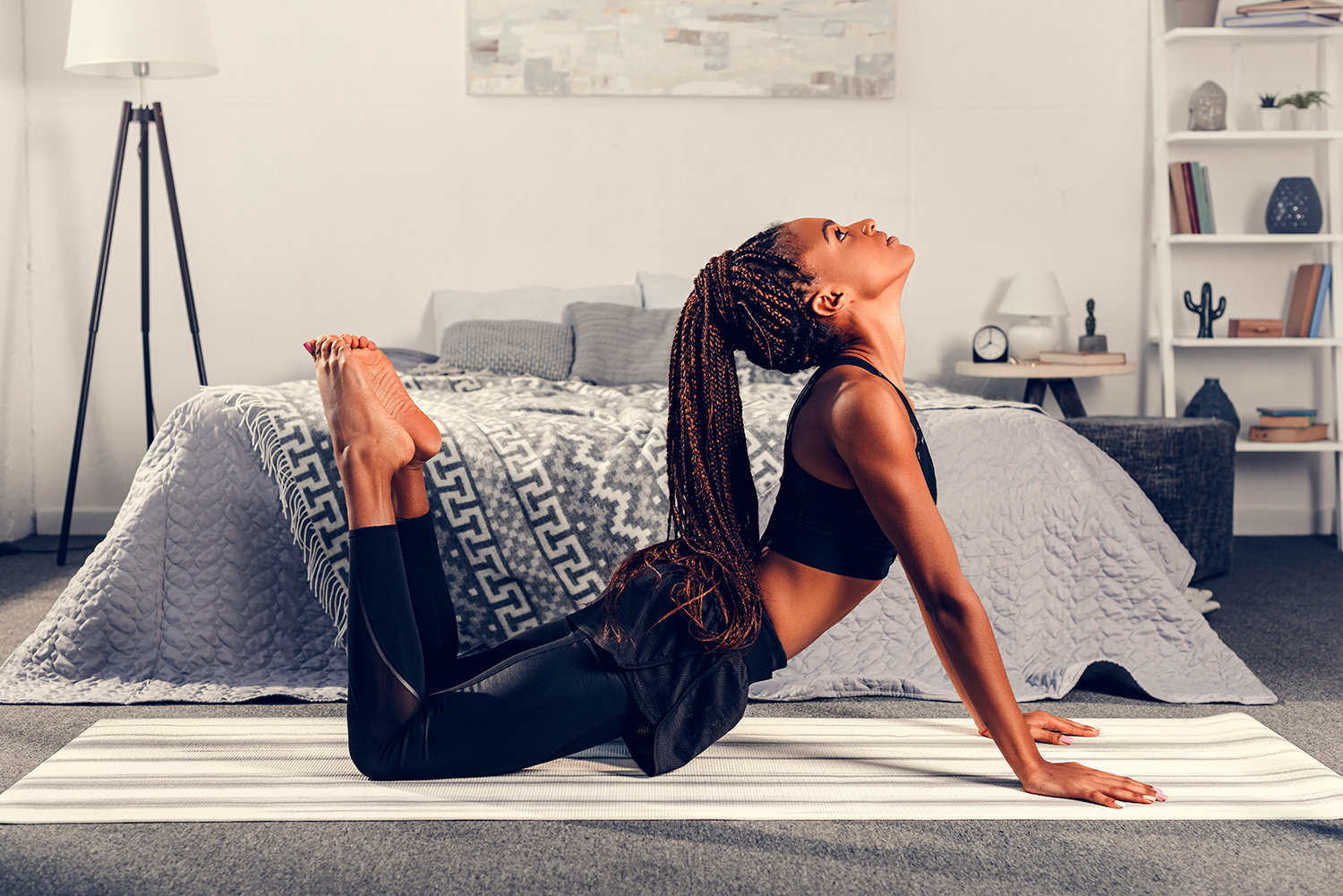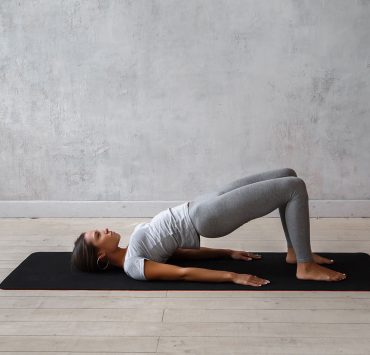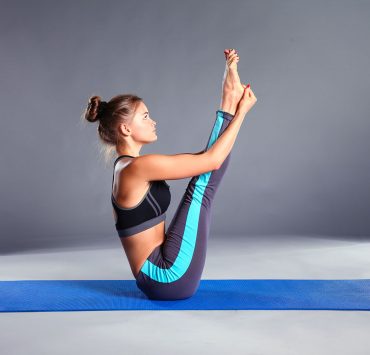
Having been a teacher’s assistant at over 50 yoga teacher…
Are you having a lazy day? Maybe you have these days often, or they seldom come for you. We’ve all been there (sometimes not enough with the stressful lives we tend to lead). It’s totally okay to have the days where you wake up, lay on the couch, and watch Netflix. This could be your body telling you that actually need to rest and relax. Listen to that.
Generally as a society we do tend live much more stressed out and fast paced lives than we can handle, especially when we don’t also take the time to decompress. In fact, nearly half of people report being more stressed than they did 5 years ago. At this rate, if we don’t slow down soon then our stress levels will have us all eventually in a place where we can’t even live the lives we want to live. So listen to your body, and be lazy.
The word lazy does have a negative connotation to it, implying that it means you don’t work hard enough, which I highly doubt is actually the case. So think of it too as relaxation, and with relaxation comes rejuvenation.
Embrace the laziness for at least today! Taking the time to relax your body and mind will also decrease your risk for stress related illnesses like heart disease, heart attacks, strokes, and inflammation to name a few.
Maybe you are not what you would consider yourself “lazy” at all. Maybe you are always on the go, that you feel like you don’t have a choice not to be. Even then so, a “lazy” yoga practice might be one of the best things you can do so that you can give your body, mind, and being time to decompress. Even if it is only five minutes out of your busy day, that is still something. And it is worth giving a try.
In fact slowing down and coming into connection with the breath is a technique used by navy seals and soldiers to focus their calm and focus their mind. Check out this Tedx Talk on using the breath to heal and how it does so.
In this list of yoga asana for the “lazy yogi” are several postures that would be considered to be within the realm of restorative and/or yin yoga. Both are wonderful for the body, mind, and that connection.
Restorative yoga poses are supported and meant to have little sensation, but allows the body to calm, let go, and heal. Even though it sounds simple and easy, it is actually quite challenging to stay still and really allow yourself to let go. Which is partly why this type of deep relaxation is so needed! Yoga Journal sites some of the benefits of restorative yoga as:
It helps us develop the skill of conscious relaxation.
Helps us discover where we are holding tension.
Creates the conditions for the relaxation response to kick in
Helps us face what we are avoiding about ourselves
Yin yoga is also a practice where poses are held. But it is usually not supported. A support can be used if needed. But usually in yin yoga, passive stretching poses are held for several minutes and there is more sensation that is felt within the body than in restorative yoga. Holding the stretches for several minutes is important because this actually allows time for the muscles to release and get into the connective tissue in the body.
Ekhart Yoga talks about some of the benefits of yin yoga:
Calms and balances the mind and body
Reduces stress and anxiety
Increases circulation
Improves flexibility
Releases fascia and improves joint mobility
Balances the internal organs and improves the flow of prana
So, whether or not you are someone that loves a slower pace or not, these lazy asanas can be for you.
Child’s Pose

Could stay here for the entire time you spend on the mat, it is so good. Child’s pose is calming to the mind, decompressing of the spine, and restorative to the body. You can come into child’s pose by resting your hip back over your heels and your torso on your thighs, allowing your head and neck to relax.
Reclined Half Hero Pose

This is a variation on full Hero pose. The half aspect, meaning one leg at a time, allows the pose to be a little less intense and to spend more time with each leg. There are still a couple of ways to get into Half Hero. One way is to begin lying on your back with knees bent and feet as wide as the mat. Send both knees over to the left side and then walk your right foot in a little closer to your hip to where you feel the stretch in the front of your right hip. Spend several minutes here breathing into the opening in your hip flexors. Then slowly move into the other side.
Gorilla Pose

Gorilla pose is a variation of a forward fold, by placing your palms underneath your feet with your toes at the inside of your wrists. It gives a nice massage to both your feet and your hands while calming the mind. Gorilla pose also helps with digestion, relieving stress and anxiety, stretches the back of the legs, and improves balance as well.
Seated Forward Fold Pose

Seated Forward Fold is a pose where you can deepen awareness, stretch, open, and benefit digestion, the kidneys, liver, ovaries, and uterus. It stretches the backside of your body, hamstrings especially and the calves. With your legs extended, slowly fold forward first by keeping your back straight to deepen the stretch in the hamstrings at first, and then you can round your back and sink more into allowing your body to naturally be in the shape.
Dragon Pose

Dragon pose is a part of the yin yoga realm, along with many others as it has become a very popular pose that you can likely find in many classes. It is a deep hip opener, while also providing a deep stretch in the hip flexors. While also strengthening the legs, dragon pose can increase endurance and mental focus with the different actions. The front leg is bent with the sole of your foot by the mat, arms supporting the upper body inside the bent leg, and the back leg is extended straight behind you (either lifted or on the mat).
Baby Cobra Pose

Baby Cobra, a gentler version of traditional cobra with just as much benefits, is a backbend that opens the chest, shoulders, and strengthens the back. It also decreases tightness that often accumulates in the low back area. For baby cobra, from laying on your belly, lift your chest up using the strength of your back and core, keep the shoulders away from the ears, and have your hands lightly placed on the mat underneath your shoulders.
Low Lunge Pose

Low lunges are pretty commonly used in yoga classes, so it may not be new to you but that doesn’t take away from the goodness it can offer. Low lunges are done with the back knee lowered to the mat. This pose improves balance, strengthens the legs, stretches the hips flexors, hips, and benefits stability in your legs and back.
Half Hanumanasana (Half Split) Pose

Don’t let the name scare you, Half Split doesn’t mean you are going down in the splits. It is more like a runner’s lunge. With one leg extended straight in front of you and the other leg bent on your knee behind you, this pose allows you to go as far as comfortable for you in one leg for a hamstring stretch. Blocks also come in handy to rest your hands on! Move slowly into the pose, breathing deeply, and try to keep your back straighter than rounded to protect the integrity of your back as you open the backs of your legs.
Supported Fish Pose

The Heart Opener you can really chill in, Supported Fish Pose is a backbend focused in your upper and mid back area. Opening your chest allows your heart chakra to be stimulated and relieve areas of tension buildup that is significantly brought on by sedentary living, or even just looking down at your phone for an accumulation of several hours per day. With a block or bolster underneath your shoulder blades, allow your chest and arms to fall open over the support with your legs extended long. You can rest your head on a support as well, or let it fall to the mat depending on your comfort level.
Supported Bridge Pose

In this version of Bridge Pose, you get the benefits of opening the front side of the body while also getting to relax and soften. With your sacrum resting on a block for support while in bridge pose, you can melt your hips and low back over the block, deepen your breath, and allow the front of your hips to also relax and soften. This pose calms anxiety, stress, stimulates internal organs, relieves back pain, and improves the parasympathetic nervous system response.
Legs Up The Wall Pose

You can definitely stay for a while if you want to. Legs up the wall is a supported inversion where you can let go of any effort and just be in the pose. This inversion is very strengthening of the parasympathetic nervous system, which balances the autonomic nervous system. Legs up the wall when held for at least 7 minutes, which is about the time for one whole blood cycle, is rejuvenating to blood circulation as it reverses the flow and can be like hitting a refresh button. Sitting on your side at the wall, turn so you can lift your legs and let them rest on the wall, if you would like you can place your sacrum or hips on a block or blanket for a lift in your hips.
Figure Four Stretch Four Pose

This reclined pose is a deep stretch for your outer hip and is a great pose for releasing tension in your low back. With the added part of being reclined in this pose, it allows you to sink and rest in your back for less exertion and more focus in the opening of your hips. From laying on your back, place one ankle on top of the knee of you other leg and then interlace your hands behind the thigh of that leg. Use the grasp of your hands to deepen the stretch and then repeat on the other side.
Puppy Pose

Puppy pose, also known as Melting Heart, is an invigorating backbend that you can spend time in for relieving stress and tension. It strengthens and stretches the arms, chest, hips, and back. From kneeling with your hips over knees, keep your hips over knees as you walk your hands forward bringing your chest towards the mat to where you can rest your forehead on the mat or on a block.
Staff Pose

Staff pose is an active pose that helps with posture, strengthening and lengthening the back, gently opens the chest and shoulders, and is balancing to the body and mind. Essentially you are making an L-shape with your legs extended and sitting up tell. Keep your legs active and hands pressing into the ground beside your hips.
Supported Shoulder Stand Pose

Supported Shoulder Stand is a safer and more comfortable way of practicing traditional shoulder stand. It does still give you the benefits of toing the legs, relieving tension in the back, lessening symptoms of depression, calming the mind, and helping blood circulation. Place your shoulders on a blanket for more support for your neck and for added ease in the pose, you can place your hips on a block and let your legs be in the air with your hips rested.
Happy Baby Pose

Happy Baby is a lighthearted pose to think about as you in the pose and channel your inner happy baby. It also is a massage to the sacrum and back, opens the hips and inner thighs, calms the mind, and relieves tension. Lying on your back, bring knees towards your armpits and grab onto your ankles and soles of your feet.
Reclined Bound Angle Pose

Reclined Bound Angle is a hip and inner thigh opener, stimulates the abdominal organs, improves digestion, creates space for deeper breathing, and is calming to body and mind. It can also be a chest opener if you place a bolster or block underneath your back while you lay back with the soles of your feet touching.
Reclined Spinal Twist Pose

This pose is a must! Reclined Spinal Twists decompress the spine in a way that create space between the vertebras allowing the muscles that hold up the spine to release tension. It also helps with sleep, digestion, balancing of the nervous system, and opening the chest, torso, and hips. Lying on your back, send both knees over to one side as your look over the opposite shoulder with outstretched arms.
Savasana

Ah, finally.. Savasana is where you can truly and completely let go. Let go of your mind, any effort in your body, your breath, and just be. You can just lie there. Traditionally with your legs extended and arms simply extended, but you can also place a bolster underneath your knees for extra support for your back, grab an eye pillow over your eyes, cover yourself with a blanket, and whatever feels good to you.
Seated Meditation Pose

This can be a bit more challenging to stay in meditation. But even just a few minutes of following your breath can be a meditation. Sitting up on a bolster, block, or even in a chair is beneficial for the knees and low back so you can sit more comfortably. Meditation has many benefits as well that make this part of the practice important.
Most importantly with all of these poses, remember to breathe. Be intentional with your breath. Allow your breath to deepen and lengthen.
Smile, breathe, and go slowly. Thich Nhat Hahn
Give these poses and techniques a try on your lazy day, and you may find a deeper connection to your body and mind. Likely even a feeling of rejuvenation.
What's Your Reaction?
Having been a teacher’s assistant at over 50 yoga teacher trainings worldwide, Rebecca Rebecca has a firm grasp on the fine art of yoga and meditation. In her work, she carefully reflects on a vast expanse of knowledge to help others find peace in both body and mind.














